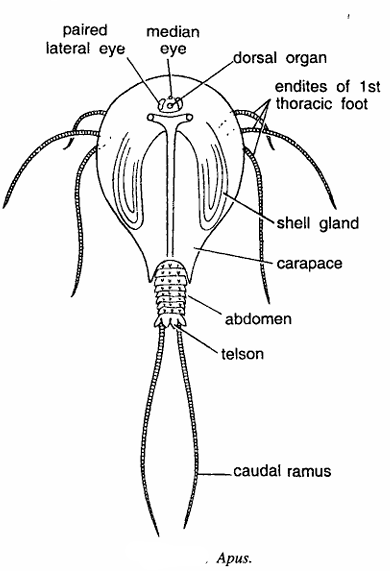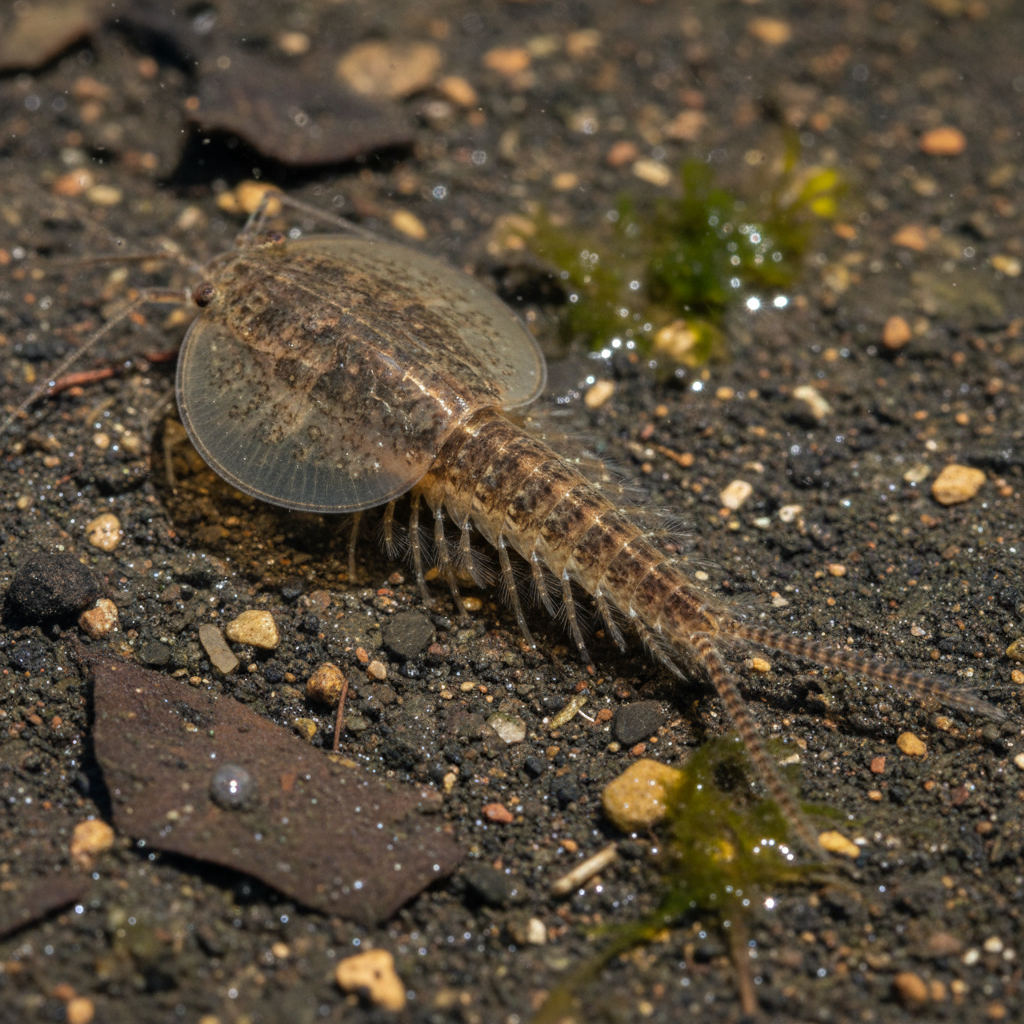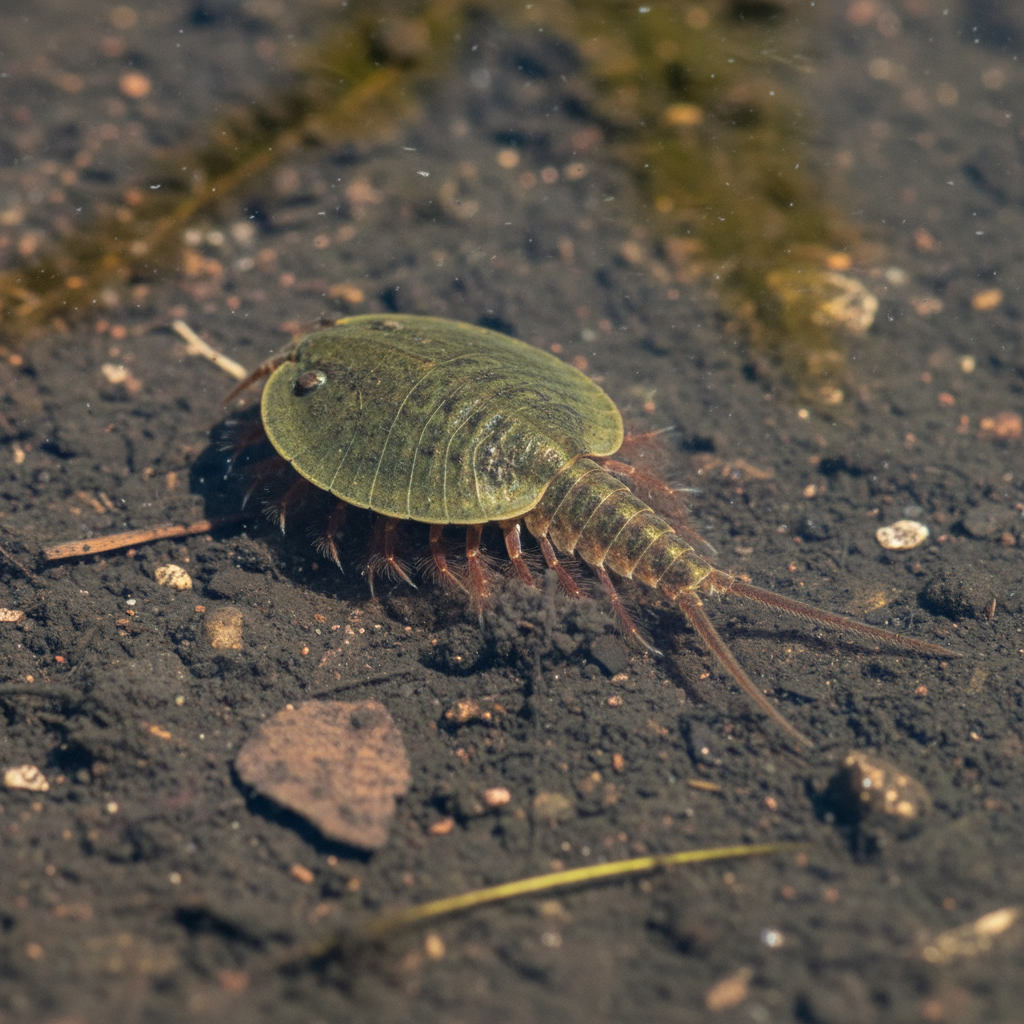Apus: Morphology, Classification, Habitat, and Life History of the Tadpole Shrimp
Apus is a genus of freshwater crustaceans commonly known as tadpole shrimps, belonging to the order Notostraca within the class Branchiopoda. Distinguished by their shield-like carapace and elongated bodies, tadpole shrimps are ancient crustaceans often considered living fossils, showing little change since the Triassic period. Apus species inhabit temporary ponds, marshes, and ditches, exhibiting remarkable adaptations for surviving in unpredictable and ephemeral aquatic environments. Their unique morphology and reproductive strategies make them a model group for studies on evolution, ecology, and resilience.
Classification of Apus
| Taxonomic Rank | Name | One-line Characteristics |
|---|---|---|
| Kingdom | Animalia | Multicellular eukaryotic organisms |
| Phylum | Arthropoda | Segmented animals with jointed appendages |
| Class | Branchiopoda | Primitive crustaceans with gills on thoracic appendages |
| Order | Notostraca | Tadpole shrimps with large dorsal carapace |
| Family | Triopsidae | Branchiopods with shield-like carapace and long bodies |
| Genus | Apus | Tadpole shrimps with flattened head shield and many body segments |

Habit and Habitat
Apus species are primarily found in temporary freshwater ponds, marshes, and ditches that fill during rainy seasons and dry out periodically. Their habitats are shallow, nutrient-rich, and may experience significant fluctuations in temperature, chemical composition, and water availability. Apus prefers environments free from fish predation and can tolerate a wide pH range and relatively high concentrations of nutrients such as nitrates and phosphates.
To endure dry conditions, Apus forms dormant cysts that can survive in dried sediment for many years, hatching only when water returns. This adaptation enables rapid colonization and life cycle completion during brief periods of pond inundation.
Geographical Distribution
Apus is cosmopolitan, occurring in temporary freshwater bodies worldwide, including Europe, Australia, New Zealand, North America, and parts of Asia. Its wide distribution is facilitated by cyst dispersal via wind, birds, and other animals.

General Characteristics
- Commonly called as Tadpole shrimp.
- Body divisible head-thorax (Cephalothorax) and abdomen measuring 20 to 30 mm in length.
- Head is broad, depressed and covered by a horse-shoe shaped carapace which bears eyes above, antennules and antennae beneath.
- The labrum, mouth, antennules, antennae, mandibles, maxillae are present ventrally.
- Anterior two-thirds of the dorsal surface is covered by a thin chitinous shell or carapace, which covers major part of the body.
- Beyond the posterior edge of the carapace a cylindrical and segmented abdomen projects.
- Last segment bears anus and a pair of long caudal styles.
- On the dorsal surface of the carapace, near its anterior border, are paired eyes, median eye and dorsal organ.
- Sexes are separate. Males are few. In females few segments are without swimming Development includes nauplius larva.
- Body Form: Elongated, dorsoventrally flattened body covered by a broad, shield-like carapace; resembles a tadpole.
- Size: Typically ranges from 2 to 10 cm in length, depending on the species.
- Coloration: Varies from light grey or olive to brown or reddish, often matching substrate colors.
- Appendages: Numerous paired trunk limbs (up to 70 pairs) functioning in locomotion, feeding, and respiration.
- Eyes: Two simple compound eyes on the dorsal carapace.
- Tail: Forked caudal appendages, aiding in swimming.
- Feeding: Omnivorous; consumes algae, detritus, and small invertebrates.
- Respiration: Gills located on thoracic appendages.
Special Features
- Dormancy: Production of drought-resistant eggs (cysts) ensures survival through dry seasons.
- Carapace: Provides protection against predation and desiccation.
- Rapid Development: Short life cycle allows swift maturity and reproduction within weeks.
- Hatching Synchronization: Eggs hatch in response to water presence, often simultaneously during rain.
- Environmental Tolerance: Survives in extreme environments, including high salinity, wide pH, and pollution.
Identification
Identification is based on:
- Carapace shape and texture.
- Number and arrangement of body segments and trunk appendages.
- Eye position and size.
- Caudal appendage structure.
- Geographic and ecological occurrence.

Life Cycle and Reproduction
Apus exhibits both sexual and parthenogenetic (asexual) reproduction, depending on species and population. Adults lay eggs that can dry and persist in sediment for years in dormant cyst form. When the environment becomes favorable with the return of water, eggs hatch and grow rapidly, completing their life cycle within a few weeks to months.
This lifecycle synchronizes with ephemeral habitats such as rain-filled ponds, enabling Apus to exploit fleeting resources and avoid competition and predation from fish.
Ecological Role and Importance
- Detritivores and Predators: Play a key role in nutrient cycling and control of invertebrate populations.
- Resilience Indicator: Presence signals the quality and periodicity of temporary aquatic habitats.
- Model Organism: Used in evolutionary biology and developmental studies due to ancient lineage and unique life cycle.
- Biodiversity Enrichment: Supports other invertebrate and microbial communities through bioturbation and as prey.
References
- https://en.wikipedia.org/wiki/Lepidurus_apus
- https://www.britannica.com/animal/crustacean
- https://www.sciencedirect.com/science/article/pii/B9780123748553000182
- https://en.wikipedia.org/wiki/Crustacean
- https://www.vedantu.com/animal/crustacean
- https://pmc.ncbi.nlm.nih.gov/articles/PMC10848873/
- https://zienjournals.com/index.php/tjabs/article/download/3986/3303/3901
- https://basu.org.in/wp-content/uploads/2020/09/Classification-of-Crustacea.pdf
- https://crustacean.inhs.illinois.edu/astacology/
- https://pmc.ncbi.nlm.nih.gov/articles/PMC7124122/
- https://www.britannica.com/animal/crustacean/Natural-history
